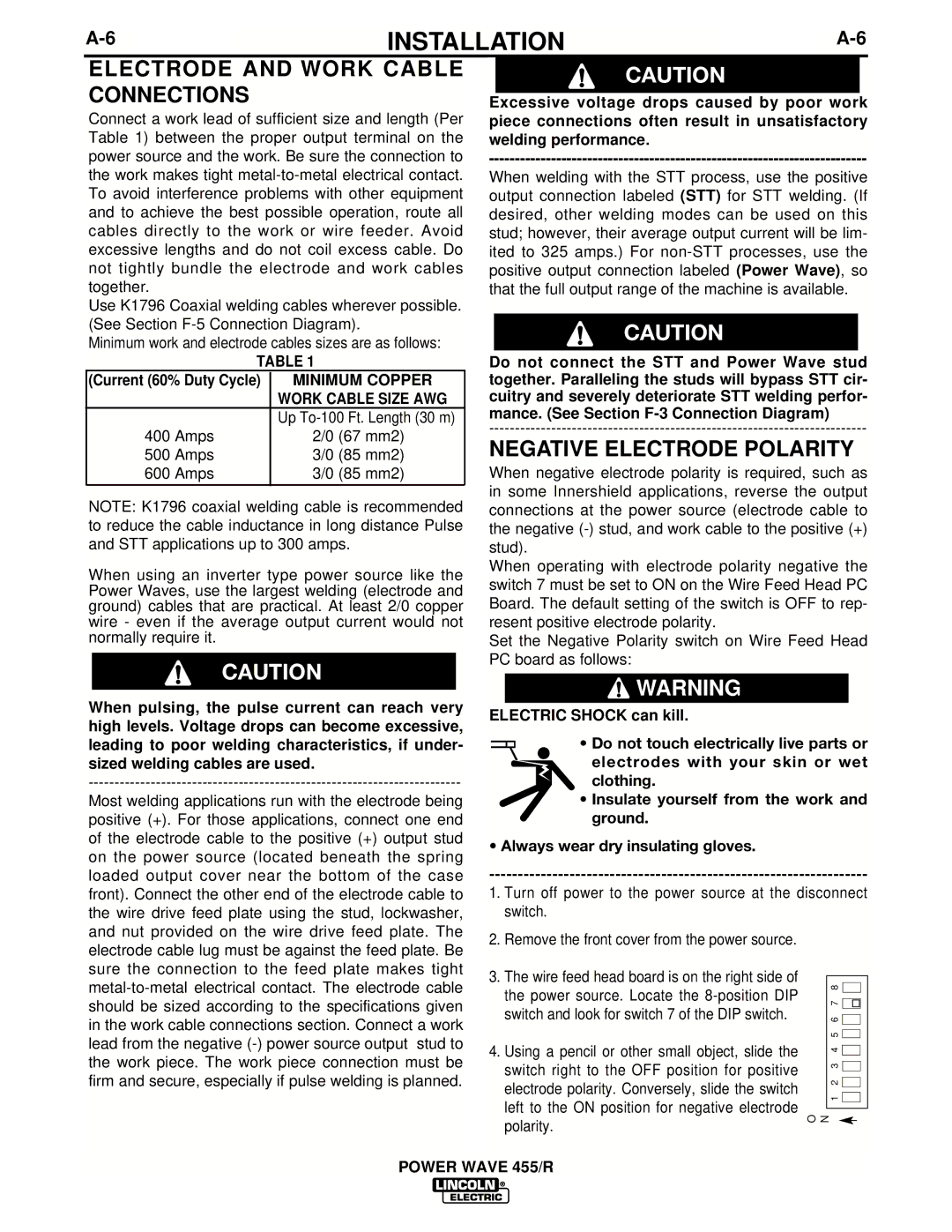IM690-A specifications
The Lincoln Electric IM690-A is a sophisticated and versatile multi-process welding machine designed to cater to a wide range of professional welding applications. Combining innovative technology with robust functionality, the IM690-A stands out as a reliable choice for welders across various industries.One of the primary features of the IM690-A is its multi-process capability, allowing users to perform MIG, TIG, and stick welding with ease. This versatility is essential for welders who need to switch between different welding techniques depending on the project requirements. The machine's advanced control system ensures a smooth transition between processes, optimizing the welder's performance and efficiency.
The IM690-A is powered by a high-performance inverter technology that significantly improves energy efficiency while providing a stable arc. In addition to power efficiency, this technology enables the machine to have a compact design, making it portable and easier to maneuver in tight spaces. The inverter technology also contributes to a reliable and consistent welding output, which is crucial for high-quality welds.
Another notable characteristic of the IM690-A is its user-friendly interface. The machine features a large digital display and intuitive controls, allowing welders to easily adjust settings and monitor performance parameters. This ease of use is particularly beneficial for beginners and experienced welders alike, facilitating quick adjustments during operation.
The IM690-A also incorporates advanced safety features, ensuring the well-being of the operator. Overload protection and automatic thermal shutdown provide peace of mind, allowing users to focus on their work without the constant worry of equipment failure. The rugged construction of the machine adds an extra layer of durability, making it suitable for demanding environments and extensive usage.
Additionally, the IM690-A supports a wide variety of materials and thicknesses, making it ideal for diverse applications, from automotive repair to heavy fabrication. With features like adjustable inductance settings and pre/post gas flow control, users can fine-tune their welding processes for optimal results.
In conclusion, the Lincoln Electric IM690-A is a powerful multi-process welder that combines advanced inverter technology with user-friendly design and safety features. Its versatility, efficiency, and adaptability make it an outstanding choice for professionals seeking a reliable welding solution. Whether you’re working in a shop or on-site, the IM690-A delivers exceptional performance and quality in a compact, durable package.

